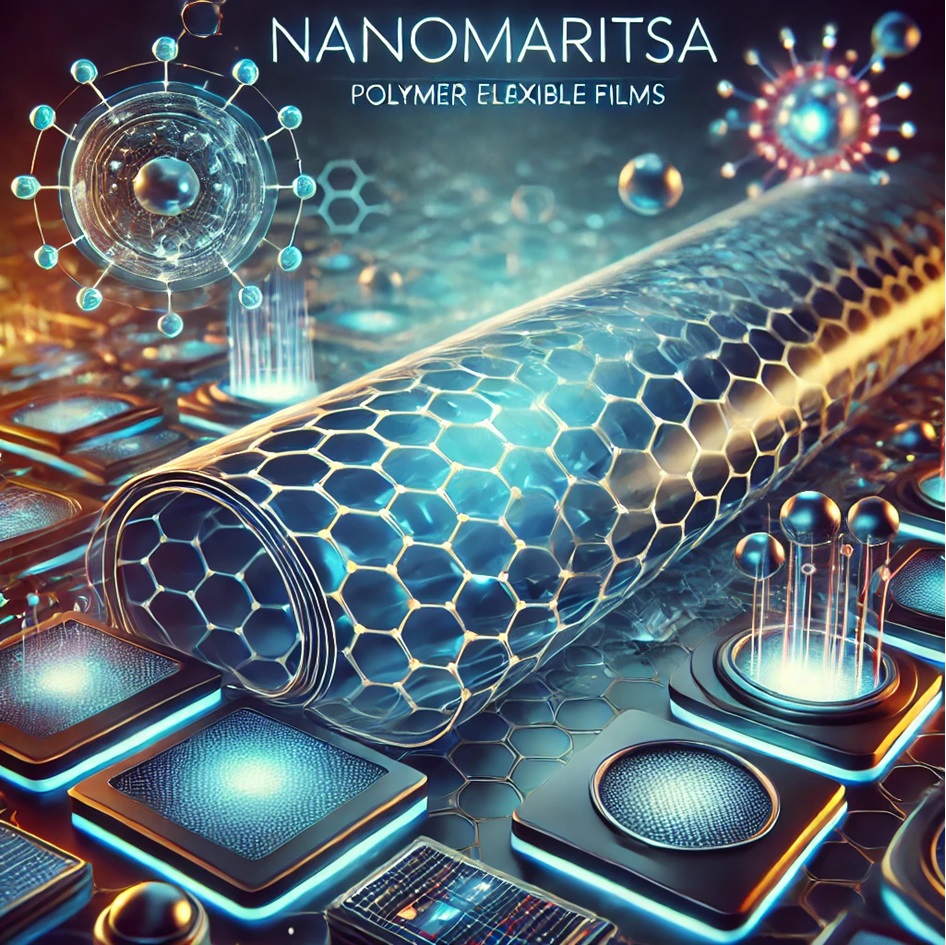Revolutionizing Materials Polymer Films Enhanced with Graphene
Revolutionizing Materials: Polymer Films Enhanced with Graphene
The convergence of graphene’s remarkable properties with the versatility of polymers has paved the way for innovative materials that redefine performance and functionality. Polymer films made from graphene represent a breakthrough in material science, offering unparalleled strength, flexibility, conductivity, and thermal stability. This blog explores the synthesis, properties, applications, and future potential of graphene-polymer films, supported by cutting-edge research and technological advancements.
What Are Graphene-Enhanced Polymer Films?
Graphene-polymer films are composite materials that combine polymers with graphene or graphene derivatives like graphene oxide (GO) or reduced graphene oxide (rGO). These films leverage the unique properties of graphene to enhance the mechanical, thermal, and electrical performance of traditional polymer materials.
Key Characteristics of Graphene-Polymer Films:
- Exceptional Strength:
- Graphene’s high tensile strength reinforces polymer films, making them more durable.
- Enhanced Conductivity:
- Incorporating graphene improves electrical and thermal conductivity, enabling advanced applications.
- Lightweight and Flexible:
- Maintains the lightweight nature of polymers while adding robustness and flexibility.
- Barrier Properties:
- Graphene layers provide excellent gas and moisture barrier properties, protecting against environmental factors.
- Chemical and Thermal Stability:
- Improves resistance to harsh conditions, extending the lifespan of materials.
How Are Graphene-Polymer Films Made?
- Solution Mixing:
- Graphene or its derivatives are dispersed in a polymer matrix using solvents and mixing techniques.
- Melt Processing:
- Graphene is directly blended with polymers during the melting phase, forming a uniform composite.
- Layer-by-Layer Assembly:
- Alternating layers of graphene and polymers are deposited to create films with tailored properties.
- Electrospinning:
- Graphene-polymer solutions are spun into thin fibers, which are then formed into films.
- Chemical Vapor Deposition (CVD):
- Graphene is grown on polymer substrates using CVD, ensuring high-quality integration.
Applications of Graphene-Enhanced Polymer Films
- Electronics
- Flexible Displays:
- Graphene-polymer films enable bendable and stretchable screens for smartphones, wearables, and tablets.
- Transparent Conductive Films:
- Replacing indium tin oxide (ITO) in touchscreens and OLEDs.
- Electromagnetic Shielding:
- Protects electronic devices from interference in high-frequency environments.
- Energy Storage
- Batteries:
- Used as separators or electrode materials in lithium-ion batteries.
- Supercapacitors:
- Enhance charge storage and discharge rates, improving energy density.
- Solar Cells:
- Acts as transparent electrodes, increasing efficiency and reducing costs.
- Packaging
- Food and Pharmaceuticals:
- Barrier properties prevent gas and moisture permeation, ensuring product freshness.
- Electronics Packaging:
- Protects against static electricity and environmental damage.
- Biomedical Applications
- Drug Delivery Systems:
- Films control the release of drugs in targeted therapies.
- Tissue Engineering:
- Graphene-polymer scaffolds promote cell growth and tissue regeneration.
- Wearable Medical Devices:
- Flexible films for biosensors and health monitoring systems.
- Environmental Solutions
- Water Filtration:
- Graphene-polymer membranes filter contaminants and desalinate water.
- Air Purification:
- Adsorbs harmful gases and particles, improving indoor air quality.
- Automotive and Aerospace
- Lightweight Components:
- Reduces weight while maintaining strength and durability.
- Thermal Management:
- Conductive films improve heat dissipation in high-performance applications.
Recent Research and Innovations
- Self-Healing Films:
- Researchers are developing graphene-polymer films that autonomously repair damage, extending their usability.
- Smart Materials:
- Integration with sensors and IoT devices enables responsive and adaptive functionalities.
- Biodegradable Composites:
- Eco-friendly graphene-polymer films are being created to address sustainability concerns.
- Advanced Coatings:
- High-performance coatings for anti-corrosion, anti-fog, and anti-bacterial surfaces.
Advantages of Graphene-Polymer Films
- Customizability: Properties can be tailored for specific applications.
- Scalability: Compatible with existing manufacturing processes for large-scale production.
- Cost-Effectiveness: Reduces material costs while enhancing performance.
- Versatility: Applicable across diverse industries.
Challenges and Future Directions
Challenges:
- Dispersion Issues:
- Achieving uniform graphene distribution in polymer matrices is challenging.
- Production Costs:
- Reducing the cost of graphene and its composites remains a priority.
- Standardization:
- Lack of standardized quality metrics for graphene-polymer films.
Future Directions:
- Advanced Manufacturing Techniques:
- Developing efficient and eco-friendly production methods.
- Multi-Functional Films:
- Creating films with combined electrical, thermal, and mechanical properties.
- Sustainability:
- Focus on recyclable and biodegradable graphene-polymer films.
- Interdisciplinary Research:
- Collaboration across fields to explore novel applications and functionalities.
Conclusion
Polymer films made from graphene are redefining the possibilities of material science. Their superior performance, versatility, and potential to address global challenges make them a cornerstone of next-generation technologies. As production methods evolve and applications expand, graphene-polymer films will undoubtedly play a pivotal role in shaping the future of advanced materials and sustainable innovation.


